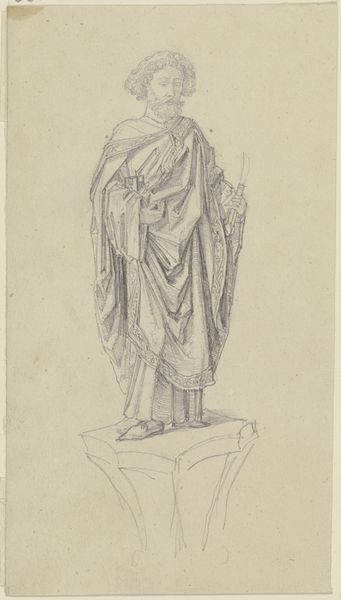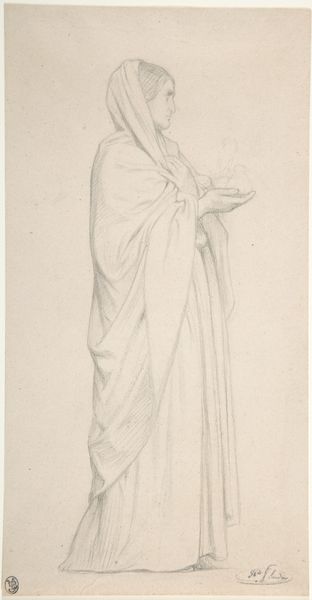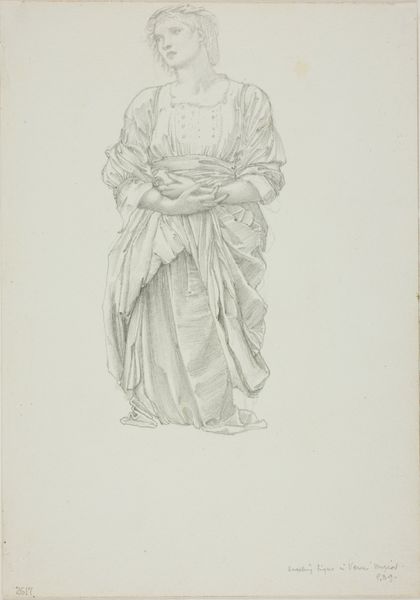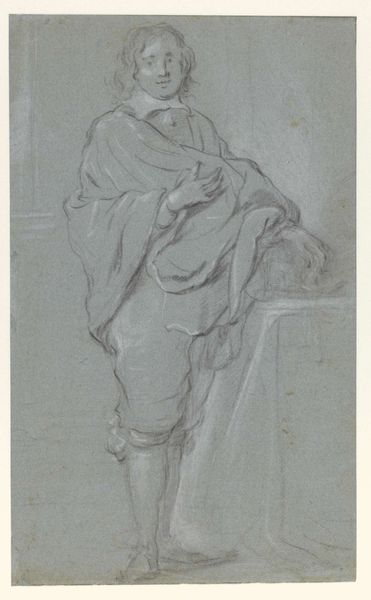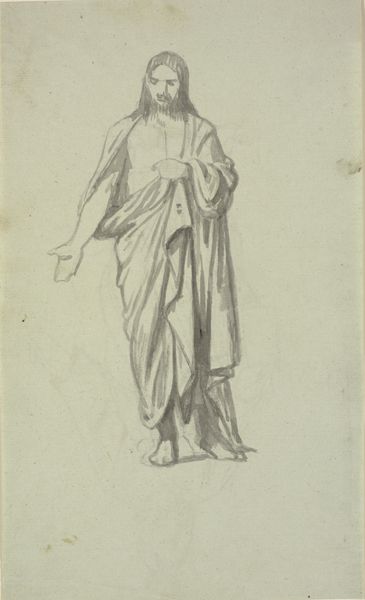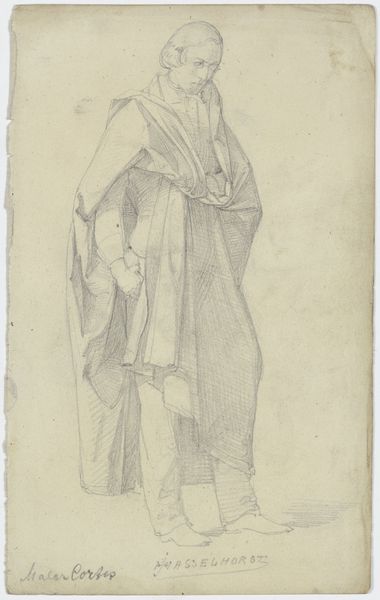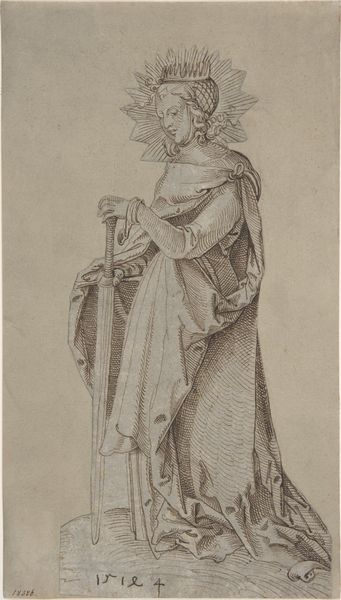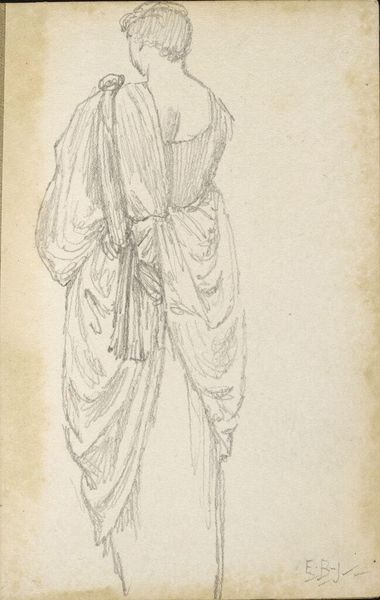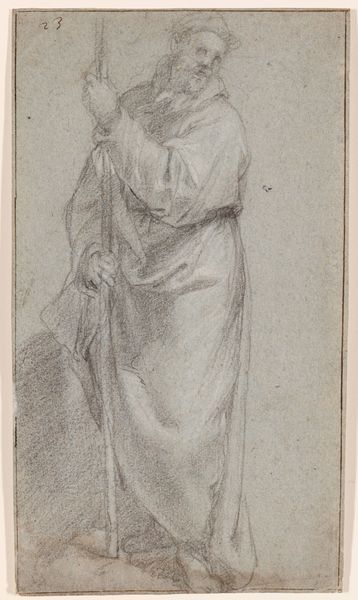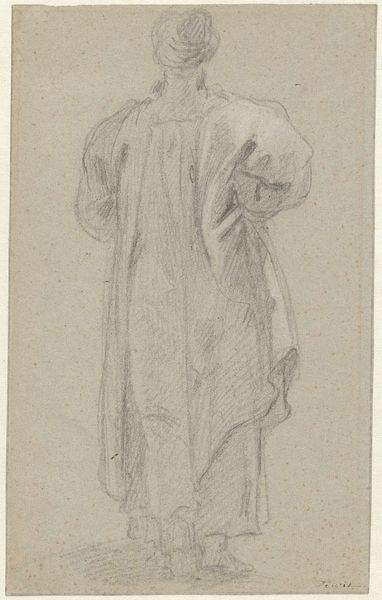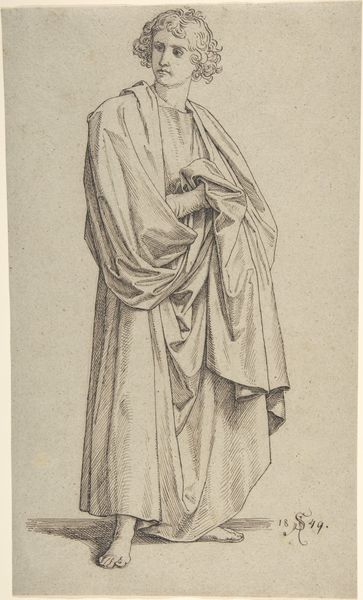
Dimensions: 252 × 178 mm
Copyright: Public Domain
Editor: Here we have Edward Burne-Jones’s pencil drawing, "Draped Standing Male Figure," made sometime between 1873 and 1877. It has this quiet, almost dreamlike quality to it, but I am unsure how to unpack all that is going on here. How do you interpret this work? Curator: Well, first notice that Burne-Jones was a key figure in the Pre-Raphaelite movement, which rebelled against industrialisation by looking back to the art of the late medieval period. In this drawing, do you see how the flowing lines and idealized form connect with notions of beauty that challenged the prevailing social norms of the time? Editor: Yes, I see the connection. The figure seems almost androgynous and ethereal, not quite fitting into typical gender roles. Curator: Exactly! Now, let’s think about the role of classical drapery. It harkens back to ancient Greece, but within a Victorian context. How might this reference subvert or question the rigid morality often associated with that era? This blending of historical styles created a visual language to contest the Victorian cult of domesticity and restrictive gender roles, don't you think? Editor: That's fascinating! So it's not just a beautiful drawing; it's actively engaging with the social and cultural debates of the time through its artistic choices. I did not think about Burne-Jones in this light! Curator: Precisely. By reclaiming historical motifs, the artist invites a re-evaluation of contemporary values and the potential for new forms of identity. It certainly gives us something to reflect on.
Comments
No comments
Be the first to comment and join the conversation on the ultimate creative platform.
